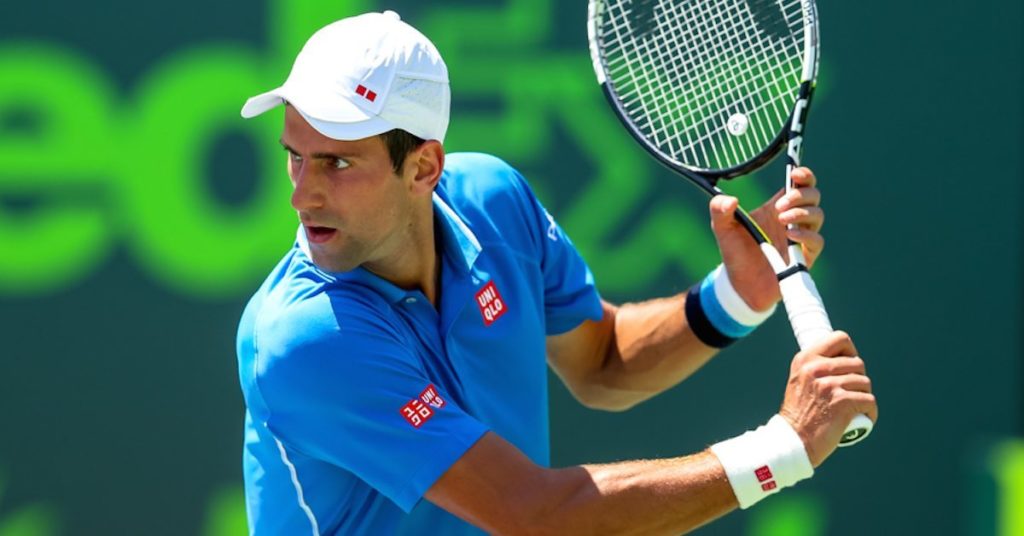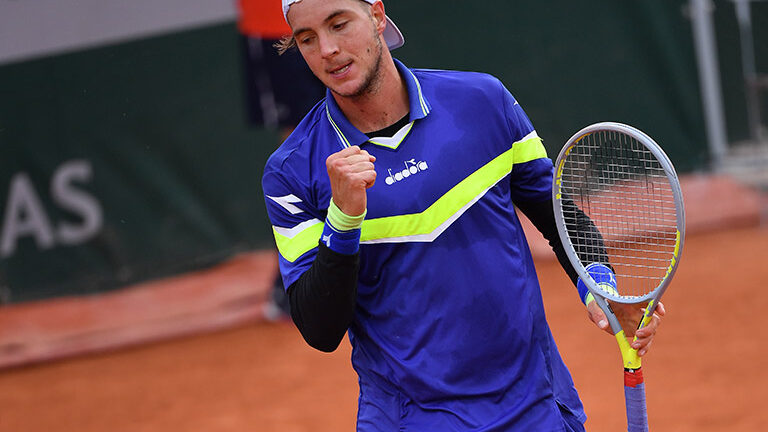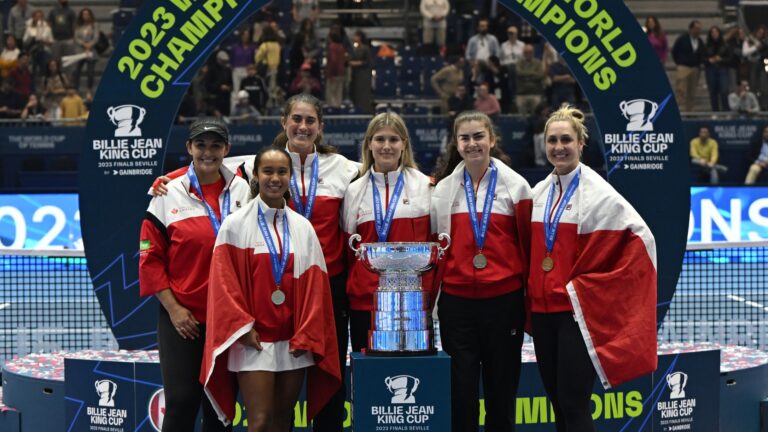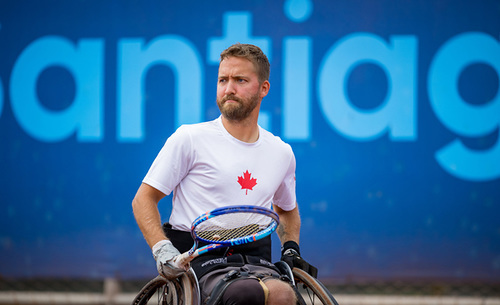
Novak Djokovic is on one heck of a run.
The 27-year-old Serb just became the first player ever to win the first three Masters 1000 events of the year – Indian Wells, Miami and Monte Carlo – with his 7-5, 4-6, 6-3 victory over Tomas Berdych in Sunday’s final in the Mediterranean principality.
With Monte Carlo being the first big clay-court event of the season, and Djokovic defeating clay living legend Rafael Nadal 6-3, 6-3 in the semifinals, many people want to virtually concede him the Roland Garros title, which would be his first and give him a career Grand Slam.
No doubt Djokovic has been sensational this year, with comparisons being drawn to 2011 when he started 41-0 and wound up winning Wimbledon and the Australian and US Opens.
“It’s hard to compare honestly because I feel different as a person, as a player, than I was in 2011,” Djokovic said Sunday about the two season starts. “I think I matured more…different circumstances in life. I’m a father and a husband. Many things are different today than they were four years ago. 2011 results-wise was the best season so far in my career. Somehow I do feel better now than I did in 2011. I do enjoy tennis, but I enjoy being a father and kind of combining it all together. It gives me great fulfillment, satisfaction and joy to keep on going.
“Everything has more sense, I have greater purpose, I would say, of playing tennis than it was the case in 2011.”
Djokovic, with losses to Ivo Karlovic in the first tournament of the year in Doha, Qatar, and to Roger Federer in the Dubai final in February, has rectified one thing from 2011. When he lost to Federer in the Roland Garros semifinals that year, he didn’t play his best and part of that had to be attributable to the pressure of being unbeaten for almost five months leading up to that match.
This year, no matter what happens in the upcoming Masters 1000 events in Madrid and Rome, he will not be carrying the same weight of his previous perfect results. As well, he says he believes past experience will help him better handle a similar situation should it materialize.

But there’s one critical factor in examining Djokovic’s chances at the French Open. He is vulnerable on hot, humid days, such as it was for the 2014 final against Nadal. After moderate weather for most of the fortnight, it came up hot and sticky for the final against the Majorcan who just loves those conditions. Nadal prevailed 3-6, 7-5, 6-2, 6-4.
Similarly in the 2014 US Open semifinals, the weather was steamy and hot and an in-form Kei Nishikori beat Djokovic 6-4, 1-6, 7-6(4), 6-3. Famously, the Serb’s coach Boris Becker explained after the match, “the sun hit Novak first.”
In torrid conditions at Grand Slam events in best-of-five set matches, Djokovic can usually handle inferior players. But faced with someone of the calibre of a Nadal, or a Nishikori when he’s in top form, having pleasant, moderate weather conditions for the toughest matches may be vital for him and his attempt to break through in Paris 75016.
It’s way premature to start awarding Djokovic the Coupe des Mousquetaires, a lot of things will have to play out over the next seven weeks. But Djokovic, at 30-2 on the year so far, has positioned himself brilliantly and has to hope everything unfolds favorably for him – including having the weather Gods on his side, especially from June 2 to June 7, the days when he could play Nadal in the late stages of Roland Garros depending on the nine-time champion’s seeding.
Getting gritty in Stuttgart

The clay-court season is now in full swing, and for the Stuttgart WTA indoor event this week that means depositing the red stuff indoors, in this case in the Porsche-Arena.
Maria Sharapova is the top seed and is attempting to achieve a rare WTA four-peat, having won the Porsche Tennis Grand Prix event the past three years. In two of those – 2012 and 2014 – she went on to win Roland Garros just a matter of weeks later.
The 2015 Porsche Grand Prix will be anything but a piece of cake for the sweet-toothed Russian. She has not played since a ragged performance in a 7-6(4), 6-3 loss to No. 97-ranked Daria Gavrilova, 21, of Russia (soon to be an Australian) in her opening match at the Miami Open last month. Coming back off a leg injury, Sharapova faces a tough opening match, likely against unseeded Angelique Kerber. The No. 14-ranked German comes into the event after winning the Family Circle Cup in Charleston two weeks ago. However, she played Fed Cup in Moscow on Sunday and will have to get past lucky loser Yuliya Beygelzimer of Ukraine to set up the confrontation with Sharapova in the second round.
The Russian leads the head-to-head 4-2 but their last two matches have been classics – Kerber beat Sharapova 7-6(4), 4-6, 6-4 at Wimbledon last year while Sharapova won their previous Stuttgart meeting, 6-3, 2-6, 7-5 two years ago.
Seeded second at the $665,900 (US) WTA Premier event is Simona Halep, the world No. 3 who skipped Romania’s Fed Cup tie in Montreal last weekend.
As usual, there’s an extra incentive for car-lovers among the players – the champion will receive a Porsche 911 Carrera.
Reflections on the Genie pool

It’s mystifying watching Genie Bouchard of late. She seems to be striking the ball as well as ever but frequently makes unforced errors that she was not making this time last year when she had reached the Australian Open semifinals and was on her way to winning her first tournament in Nuremberg in May and then getting to the semifinals of Roland Garros (Maria Sharapova) and the Wimbledon final (Petra Kvitova) in June and July. It took a woman who had previously won each of those Grand Slams to beat her.
The term “flinch” comes to mind when Bouchard hits several aggressive, penetrating, controlled shots in a rally but then suddenly “flinches” one that fails to find the court – usually going long or wide, not into the net.
Picture a player’s concentration and temperament during a match as being a calm pool – perfectly still and placid – and from where all the strokes come out in their purest form.
When a player is young and fearless and unencumbered as Bouchard was last season, the pool in her mind was calm and allowed everything to flow. Now, at times it appears, there’s a ripple crossing the surface every so often. It sort of jars her natural flow and she misses shots, sometimes in bunches and sometimes by a lot.

The legendary Chris Evert made the 1971 US Open semifinals at age 16 and was a sensation. At about 26, after she had become a much more well-rounded and complete tennis player, she was asked if she thought she could beat herself when she was 16. She paused for a long time before answering, and it was obvious in the time it took her to reply that she knew all too well how confident, uncluttered and fearless her head space (and her game) was at 16. There were few of the expectations, outside pressures, distractions or negative experiences that would inevitably accumulate later as she evolved into a mature woman and superstar of the sport. At 16, she was completely self-assured on the tennis court without knowing any better. Bouchard was much like that for the first half of 2014 and even into parts of the second half.
It’s clear she isn’t in that head space any more. How to get back there? She certainly has a coach (Sam Sumyk), a physio (Scott Brynes) and other advisors to try to help her. But it’s really something that has to come from inside herself. It’s not like re-positioning her feet on the serve or adjusting her grip on her ground strokes.
The challenge for her and those around her will be to rediscover that calm, serene pool, settle down everything so that the ripples disappear, or at least appear less frequently.
It’s not something that is easy to do or she, with the help of those closest to her, would have already come up with a fix.
She may never again be as blinkered, carefree and driven as she was in 2014, but she certainly can evolve into a great competitor and champion like the mature Evert. It’s worth remembering that the now 60-year-old American great earned every one of her 18 Grand Slam titles more than two years after she had that initial blithe, worry-free run to the US Open semifinals at 16 years old.
Genie and handshake-gate

It’s amazing how Genie Bouchard not shaking Alexandra Dulgheru’s hand during the traditional pre-Fed Cup player poses last Friday has taken on a life of its own.
People in Montreal were still talking about Bouchard’s gesture – or lack of one – on Monday after Romania’s 3-2 victory over Canada over the weekend. One longtime Montreal tennis aficionado made an interesting point that’s hard to refute regarding true sportsmen and sportswomen. He suggested that if boxers can touch gloves before going out and trying to beat each other to a pulp, and if NFL players can shake hands after the coin toss before taking to the field to munch each other with crushing tackles, then surely a tennis player can shake hands for a staged photo opportunity – especially if he or she is representing their country.


